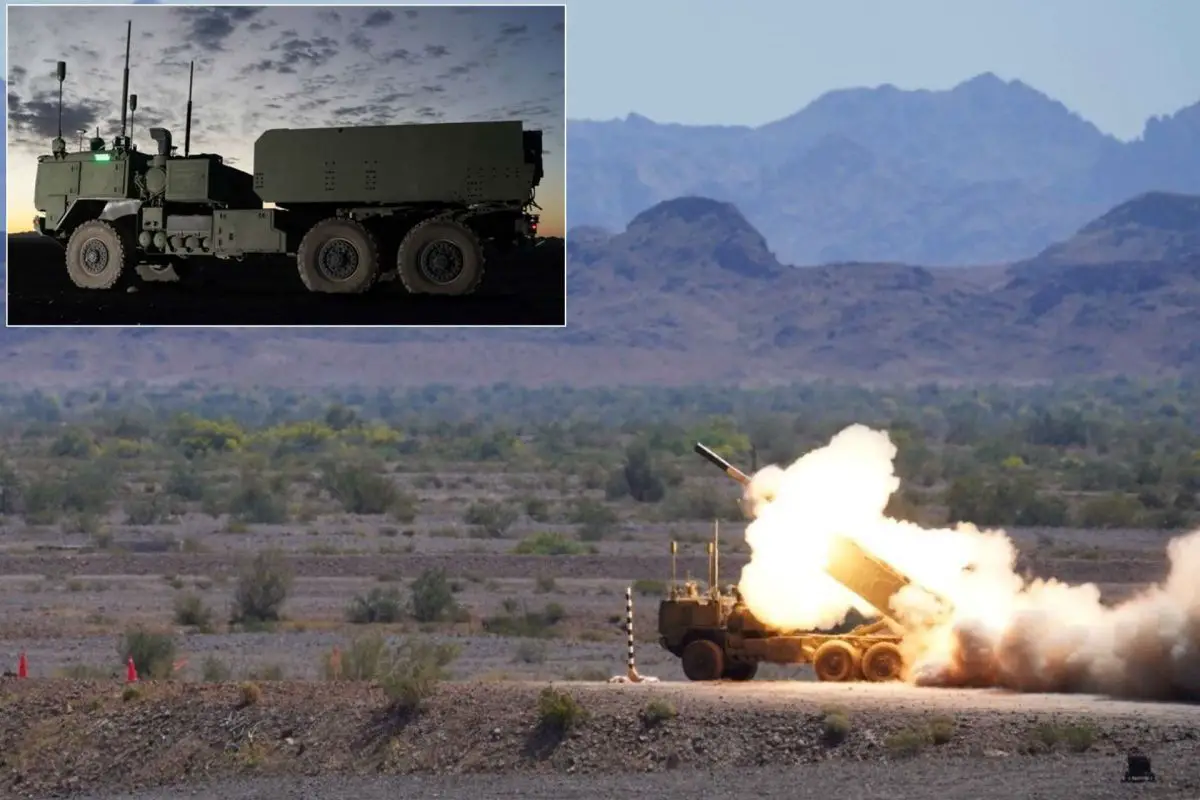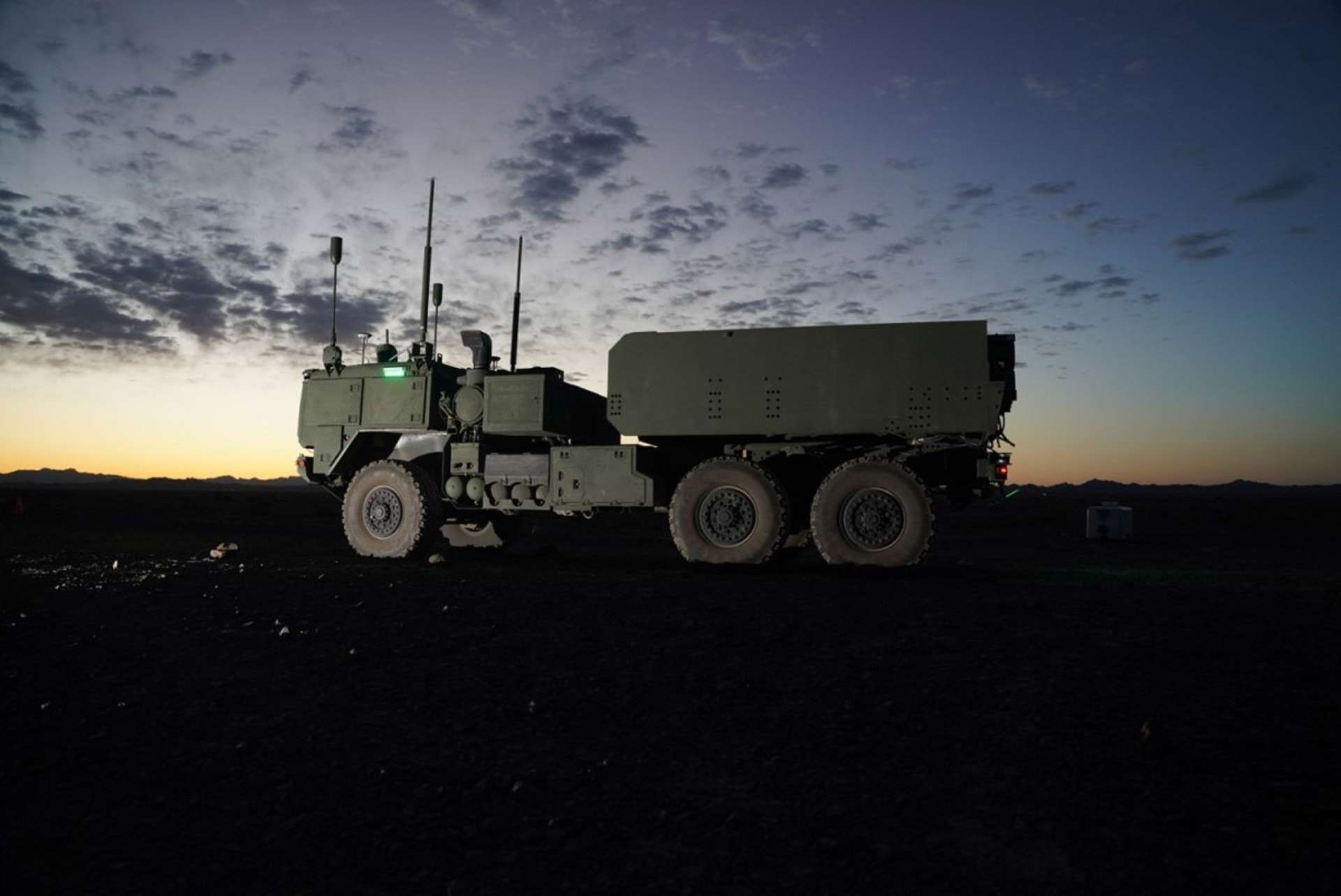Breaking news
US Army to deploy unmanned HIMARS rocket launcher in Valiant Shield 24 joint exercise.
On April 25, 2024, the US Army conducted the inaugural test-firing of the Autonomous Multi-domain Launcher (AML), an unmanned variant of the M142 HIMARS rocket launcher, at Yuma Proving Ground, Arizona. Developed by the US Army Combat Capabilities Development Command Aviation & Missile Center and the Ground Vehicle Systems Center, the AML successfully launched six Reduced Range Practice Rockets (RRPRs) during the test.
Follow Army Recognition on Google News at this link

On April 25, 2024, the US Army conducted the inaugural test-firing of the Autonomous Multi-domain Launcher (AML), an unmanned variant of the M142 HIMARS rocket launcher, at Yuma Proving Ground, Arizona. (Picture source: US DoD)
During the testing, the Autonomous Multi-domain Launcher (AML) prototype showcased its mobility across different mission profiles, including teleoperation, waypoint navigation, and convoy operations. Notably, the AML prototype is scheduled for another live-fire test as part of the bi-annual joint service Valiant Shield 24 exercise this summer, which is one of the largest US military war games held in the Pacific region.
An important aspect of the AML is its compatibility with existing ammunition pods used by the M142 HIMARS and the M270 Multiple Launch Rocket System (MLRS), ensuring interoperability and access to various munitions. These include precision-guided rockets, short-range ballistic missiles, and the Reduced Range Practice Rocket (RRPR), a training munition without warheads or guidance systems and a maximum range of approximately 15 kilometers.
A notable feature of the AML unmanned launcher is its truncated cab section, visually distinguishing it from the conventional M142 HIMARS vehicle. Despite its autonomous capabilities, the AML can be remotely operated either on-site or from a distance using teleoperation methods, providing flexibility in various operational scenarios. Features such as convoy operations, autonomous waypoint navigation, and remote-controlled turret and fire control operation are incorporated into the AML, which is projected to give the US Army a three-times increase in firepower.
In terms of operational efficiency, a fleet of AMLs, capable of being transported via C-130 aircraft, presents potential benefits in reducing personnel requirements compared to crewed launch systems. Compared to a traditional US Army HIMARS unit, a smaller number of soldiers could operate a similar number of AMLs, potentially reducing vulnerability to enemy counter-attacks.
The US Army recognizes the potential utility of the AML in future conflicts, particularly in the Indo-Pacific region, where strategic competition with China is a focal point. The AML's rapid deployment capabilities, alongside its capacity to disrupt adversary anti-access and aerial denial (A2/AD) strategies, could position it as a significant component of the US Army's modernization efforts. Moreover, there is a global trend toward autonomous military vehicles, as highlighted by the war in Ukraine.
For example, Russia has plans to develop an autonomous 300mm Multiple Launch Rocket System (MLRS) based on the BM-30 Smerch and Tornado-S MLRS platforms, aimed at modernizing rocket systems using prior experiences. Additionally, Uralvagonzavod (UVZ) is testing the Sturm unmanned combat robot, constructed on the T-72B3 tank chassis, while Rostec is advancing the remote-controlled BMP-3 Sinitsa infantry fighting vehicle (IFV), with potential deployment within the Russian military operational zone in Ukraine.
Additionally, the US Marine Corps is also pursuing similar capabilities with the Remotely Operated Ground Unit for Expeditionary Fires (ROGUE-Fires), based on the Joint Light Tactical Vehicle (JLTV), for similar reasons. Marine ROGUE-Fires vehicles configured to launch Naval Strike Missile (NSM) anti-ship cruise missiles and Tomahawk cruise missiles are currently in development, with discussions about a type capable of using the same ammunition pods as the M142 HIMARS and the M270 MLRS. Additionally, the AML's development aligns with broader American initiatives aimed at enhancing ground-launched long-range strike capabilities, with additional variants and derivatives of the Precision Strike Missile (PrSM), which could complement the AML's capabilities.

An important aspect of the AML is its compatibility with existing ammunition pods used by the HIMARS and the M270 Multiple Launch Rocket System (MLRS), ensuring interoperability and access to various munitions. (US DoD)


























